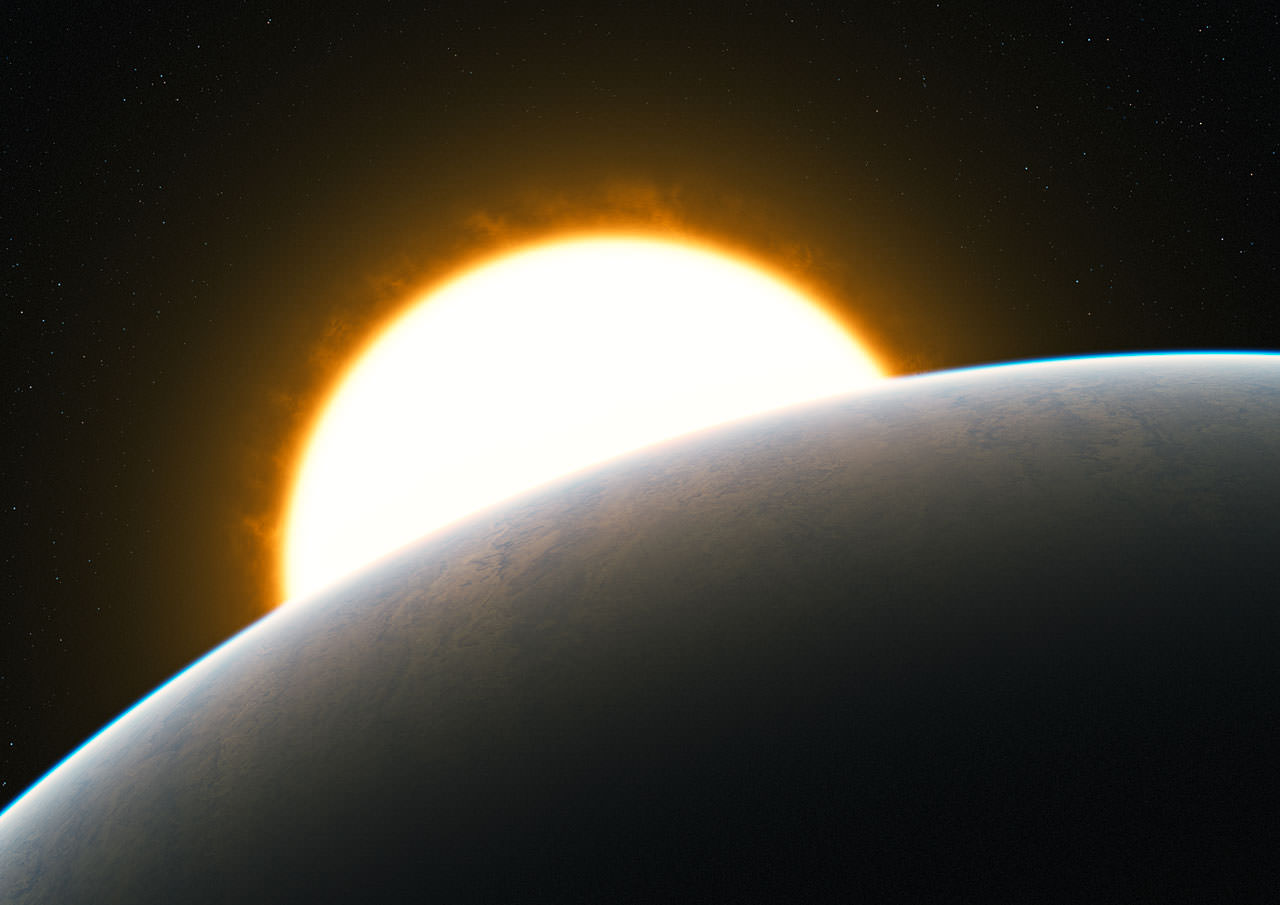[/caption]
Likely, future interstellar flights will not include the exoplanet HD209458b as a featured get-away destination. Not only is this extrasolar planet a scorchingly hot world where the poisonous carbon monoxide atmosphere is being evaporated, but new observations show this gas giant also has superstorms with winds of 5,000 to 10,000 km per hour. “It’s definitely not a place for the faint-hearted,” said Ignas Snellen, from Leiden University in the Netherlands who led a team of astronomers using the Very Large Telescope (VLT) to observe HD209458b, one of the most-studied planets orbiting around other stars. But Snellen told Universe Today that being able to detect this superstorm is extremely exciting and bodes well for finding possible life on other, more Earth-like planets.
“Astronomers have tried to do this for more than a decade,” Snellen said in an email, “basically since the first exoplanets were discovered. We now learn a lot about this gas-giant’s atmosphere, like what kind of gases are there, how hot is it, about its circulation. But we really would like to do this for Earth-like planets. This will be interesting, because using the same techniques we could find out whether there could be life on these planets.”
HD209458b (unofficially called Osiris) is an exoplanet with about 60% the mass of Jupiter orbiting a sun-like star located 150 light-years from Earth towards the constellation of Pegasus.
It orbits at a distance of only one twentieth of the Earth’s orbit around the Sun, and is heated intensely by its parent star, a yellow dwarf with 1.1 solar masses, and a surface temperature of 6000 K. The planet has a surface temperature of about 1000 degrees Celsius on the hot side. But as the planet always has the same side to its star, one side is very hot, while the other is much cooler.
Just as big temperature differences on Earth cause high winds, the same processes cause high winds on HD209458b. But even Earth’s hurricanes are nothing compared to this exoplanet’s superstorms.
Using the powerful CRIRES spectrograph on the VLT the team from Leiden University’s Institute for Space Research (SRON), and MIT in the United States were able to detect and analyze faint fingerprints which showed the high winds. They observed the planet for about five hours, as it passed in front of its star. “CRIRES is the only instrument in the world that can deliver spectra that are sharp enough to determine the position of the carbon monoxide lines at a precision of 1 part in 100,000,” said team member Remco de Kok. “This high precision allows us to measure the velocity of the carbon monoxide gas for the first time using the Doppler effect.”
The astronomers were also able to directly measured the velocity of the exoplanet as it orbits its home star, a first for exoplanet study. “The planet moves with 140 km/sec, and the star moves at 84 meters/second,” said Snellen, “so more than a thousand times slower. Both star and planet orbit the common center of gravity of the system. Having both velocities, using Newton’s laws of gravity we can simply solve for the masses of the two objects.”
The reason this planet is so well studied is that it is the brightest known transiting system in the sky. “The planet moves, as seen from the Earth, in front of its star once per three-and-a-half days,” said Snellen. “This takes about 3 hours. During these three hours, a tiny little bit of starlight filters through the atmosphere of the planet, leaving an imprint of the molecular absorption lines which we have now measured.”
Also for the first time, the astronomers measured how much carbon is present in the atmosphere of this planet. “It seems that H209458b is actually as carbon-rich as Jupiter and Saturn. This could indicate that it was formed in the same way,” said Snellen.
Snellen hopes that by refining these techniques, astronomers may one day be able to study the atmospheres of Earth-like planets, and determine whether life also exists elsewhere in the Universe.
“However, this will be about one hundred times more difficult than what we do now,” he said. “In particular oxygen and ozone are very interesting. On Earth we only have oxygen in the atmosphere because it is constantly produced by living organism, with photosynthesis of plants. If there would be some kind of global disaster and all the life on Earth would go extinct, including plant life and that in the oceans, all the oxygen in the earth atmosphere would quickly disappear. Hence finding oxygen in the atmosphere of an earth-like planet would be extremely exciting! Something to dream about for the future!”
Sources: ESO, email interview with Ignas Snellen


Identifying weather conditions on another planet in another solar system! Incredible….yet MY weatherman still can’t say for sure if it’s going to rain tonight or not.
Coincidentally out today, from UT weekend contributor and CheapAstronomer Steve Nerlich, is a podcast discussing weather systems and atmospheric dynamics that might apply to hot Jupiter exoplanets, entitled 77. Off World Weather Report